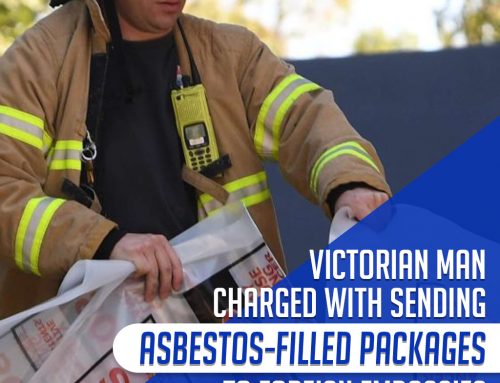Asbestos is a group of naturally occurring minerals that contain thin, soft and flexible fibres. It had been used in several domestic and industrial settings due to its excellent resistance to heat, corrosion, chemicals, and electricity. But since exposure to asbestos can jeopardise one’s health, it has been banned in many parts of the world, including Melbourne.
Now, a number of Australians are taking the necessary measures in removing the toxic material in their homes and workplaces. While this is undoubtedly a step in the right direction, the risk of asbestos exposure might be high if abatement work is improperly handled. This is why authorised regulators have established regulations and restrictions to address the matter. Here’s a thorough guide to equip you with a substantial know-how regarding the removal and handling of asbestos in Melbourne and around Australia.
A Thorough Guide About the Rules and Regulations of Asbestos Removal in Melbourne
Asbestos Ban in Australia
Until the 1980s, Australians comprise the highest percent of asbestos use per person across the globe. It has been widely used to strengthen materials and buildings. However, as you might have already been aware, it poses great potential risk to one’s health. Asbestos exposure can lead to a number of respiratory diseases such as mesothelioma, lung disease, asbestosis, etc.
Last December 31, 2003, the government has taken steps to address this problem through the complete banning of asbestos in Australia. Prohibitions were imposed on any form of asbestos manufacture, use, import, transport, storage or sale. Despite this, there is still a growing concern about the presence of asbestos in homes, workplaces, and public areas. Old-aged buildings or infrastructures most likely contain the toxic fibre.
3 Prohibitions on Workplace Asbestos Removal
Did you know that occupational asbestos is the leading cause of mesothelioma? People with high-risk jobs, such as miners and construction workers, are at a higher risk due to widespread use and exposure to asbestos. People who manage a workplace, like employers and self-employed individuals, are obligated to control exposure to airborne asbestos fibres among the workers. Below are the list of restrictions when removing asbestos in the workplace.
1. Use of Certain Tools
Instruments and equipment that trigger dust are restricted for use on materials containing asbestos. Unless they are controlled in such a way that personal air monitoring is done to avoid producing more than half the asbestos exposure standard, tools listed below should not be used for any form of asbestos removal work.
Prohibited Tools on Asbestos-Contaminated Materials
- Brooms
- Brushes
- High-pressure water jets
- Power Tools (angle grinders, sanders, saws and high speed drills)
There are acceptable control measures when using these instruments. One is by enclosing or sealing the tool. Another is when engineering methods like extraction ventilation has been executed. Alternatives are also made available to aid in asbestos removal. For instance, instead of using brooms for debris collection, you can opt for a vacuum cleaner designed with a high-efficiency particulate air (HEPA) filter. This device is much safer for use as it provides an engineering control to ensure that airborne asbestos fibres produced do not exceed half the exposure standard.
Note: The asbestos exposure standard is equal to 0·1 f/ml of air. This can be measured in the breathing zone of an individual. For calculations, divide the time weighted average fibre concentration of asbestos over the minimum period of four hours according to two methods: membrane filter and as determined by WorkSafe.
2. Use of Compressed Air and Other Gases
The law restricts the use of a pneumatic tool in open areas where asbestos fibres can have higher chance of being released in the air. For the same reason, compressed air powered equipment are not allowed for use within six metres of an activity where asbestos may be present. Similar to the regulations when using tools, compressed air equipment are permitted to use given that a person’s exposure does not go beyond half the exposure standard.
3. Unlicensed Removalist
You need to be careful of unlicensed people offering asbestos removal services in Melbourne. The process of removing asbestos requires proper knowledge and training and according to the law, it must be conducted by a licenced expert with certifications and permits. An employee of a person who carries a licence can also perform the work.
Types of Licences
- Class B – Holders of Class B licence are only allowed to perform asbestos removal of non-friable (cannot be pulverised or crumbled by hand pressure) ACM.
- Class A – These licences mean that the holder can perform both Class B and Class A asbestos removal work. They are not only limited to non-friable asbestos, but they are also authorised to remove friable ones (can be reduced to powder when dry).
Note: There are also Class A and Class B specific licences where the holder is permitted to remove only specific types of non-friable or friable asbestos-containing material.
Licencing Requirements
In order to obtain abatement work certification for Class A and Class B License, an individual must meet the following criteria:
- Class B
- At least 18 years old
- Obtained one year of relevant experience in the industry
- A certificate in Remove non-friable asbestos (CPCCDE3014A) or Remove friable asbestos (CPCCDE3015A)
- Class A
- At least 18 years old
- Obtained three years of relevant experience in the industry after completing the qualifications
- A certificate in Remove friable asbestos (CPCCDE3015A) and Supervise absestos removal (CPCCBC4051A)
Asbestos Removal Work that Does Not Need a Licence
There are cases where the law allows a person without a licence to perform asbestos removal in the workplace. Given that the asbestos-containing material (ACM) is non-friable and does not go over 10 square meters, then you can do asbestos work without licence.
Another factor to consider is the time it takes to get the work done. You can do small amounts of asbestos removal if it can be carried in less than one hour within seven days.
Legal Requirements For Managing Household Asbestos Waste
Rules and regulations also apply when managing asbestos waste in domestic areas.If you suspect presence of asbestos in your home, be sure to get it tested by professionals and observe these guidelines from storage, disposal, and tracking of asbestos waste.
Packaging and Storing Asbestos
When storing asbestos waste on your premises, you must observe precautionary actions that will not harm the people or the environment, especially your neighbours. For example, materials with bonded asbestos must have a fully secured packaging. A sealed container is also necessary when for the storage of friable asbestos materials.
Asbestos Disposal
The law imposes the proper disposal of asbestos. Being an owner of the waste, it is your responsibility to make sure that the asbestos was discarded accordingly. For example, the vehicle where the asbestos waste will be transported should have a leak-proof portion where the harmful substance will be covered. If you acquired asbestos removal services in Melbourne, don’t forget to ask for a disposal receipt from the contractors. Take note of the landfills that are authorised to receive it.
Although not compulsory under WA legislation, it is encouraged that you inform your neighbours regarding upcoming asbestos removal procedures. It indicates a good practice so they can close their doors and windows during the work.
Note: Never throw asbestos waste in kerbside bins. Not only is it harmful for Council staff, it can also pollute the waste streams.
Tracking of Asbestos Waste
Your liability does not end in leaving the waste to the care of contractors. Part of your duty is to track if the asbestos was indeed taken to its rightful place. Get the WasteLocal consignment number to confirm its arrival on this link.
Penalties for Violations
According to the Environmental Protection Authority, failure to comply to the rules and requirements stated above would cost an individual up to $7,500. On the other hand, a company has to pay a fine amounting to $15,000. If the matter is heard in court, the penalty for breaking the asbestos removal policies could reach as high as $1,000,000.
Asbestos Regulators to Contact
Several government agencies regulate and take charge of asbestos-related issues. Check out the list below to know which regulator to contact to address your enquiry.
WorkSafe (WA Department of Commerce)
WorkSafe is the one responsible for the regulation and audit of asbestos in the workplace. Specific concerns addressed by the WorkSafe include: licencing, process of asbestos removal in the workplace, validation of licenced removalists.
Website: https://www.safeworkaustralia.gov.au/
Contact Number: 1300 307 877
Email: [email protected]
National Association of Testing Authorities (NATA)
NATA is authorised to perform asbestos samples analysis. You can visit its registered laboratories around Melbourne, Australia.
Website: http://www.nata.com.au/nata/
Contact Number: 9274 8200
Department of Water and Environment Regulation
Apart from establishing regulations, it also gives advice regarding transportation and disposal of asbestos waste.
Website: https://www.der.wa.gov.au/
Contact Number: 6467 5359
Department of Health – Environmental Health Hazards Unit
If you have issues regarding asbestos contaminated soil, this is the agency that you should reach out to. It is also in-charge of asbestos legislation on public and residential situations.
Website: https://www.healthywa.wa.gov.au/asbestos
Contact Number: 9388 4999
Department of Mining and Petroleum
This government agency oversees the practices of safe asbestos in the resources industry, like mining.
Website: http://www.dmp.wa.gov.au/
Contact Number: 9358 8079
Other Asbestos Assistance Groups
There are also asbestos groups established in Australia. Some focus on safety asbestos exposure and others serve as support groups for individuals who contracted asbestos-related diseases.
- Asbestos Diseases Support Groups
- Asbestos Diseases Society of Australia
- Asbestos Safety and Eradication Authority
- Australian Asbestos Network
- Cancer Council Helpline
Asbestos removal is a crucial process that demands utmost attention. Observing these rules and guidelines will not only save you from paying the penalties but also from the dangers brought by asbestos exposure. If you still have questions about the regulations of asbestos removal in Melbourne, it is best to seek advice from the authorised agencies or even industry leaders like licenced asbestos removal specialists in Melbourne.
ALSO READ: Asbestos Exposure and Your Health
Looking for a Class A asbestos removalist in Melbourne? Contact AWARE today. Our 25 years of industry experience allows us to provide expert insight and services to protect workplaces and homes from the risks of asbestos exposure.





